Component tester Fish8840
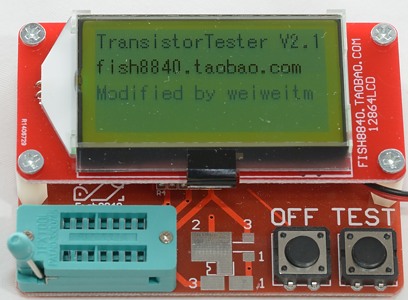
This is a fairly universal component tester, it can recognize a lot of different component types and give some parameters for them.
It is also fairly cheap on ebay
How does it look
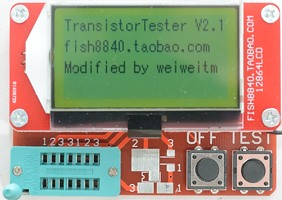

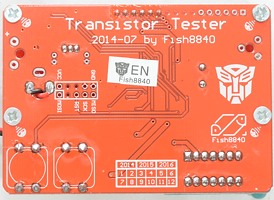

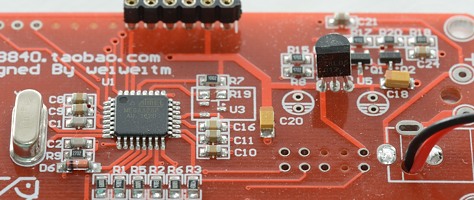
The circuit is very simple, the microprocessor do everything. It has 3 pins connected to each of the 3 terminal, one directly for ADC, the two other pins with different resistors between (R1..R6).

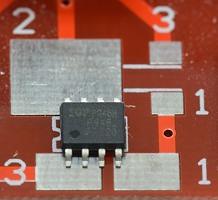
The SMD area has a good layout on this circuit and will work with many different SMD parts.
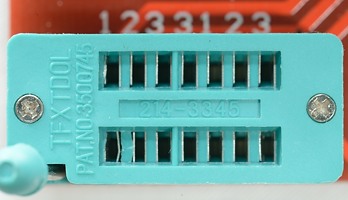
The two rows on the connector is in parallel..
Resistors

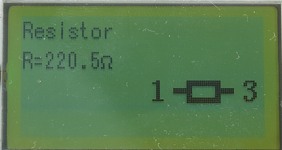
My short did have some resistance. The reason for the slightly high resistance in the 10 ohm test is probably also due to the test wires.
Capacitors

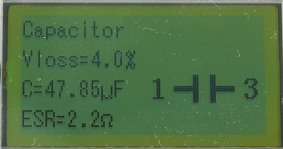
I used extension wires for some of the measurements, this is the reason for the high ESR values.
Inductors
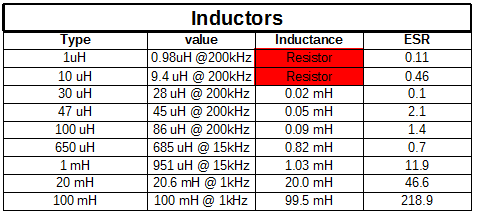
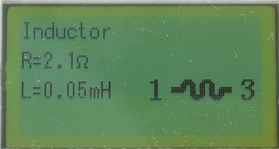
Diodes
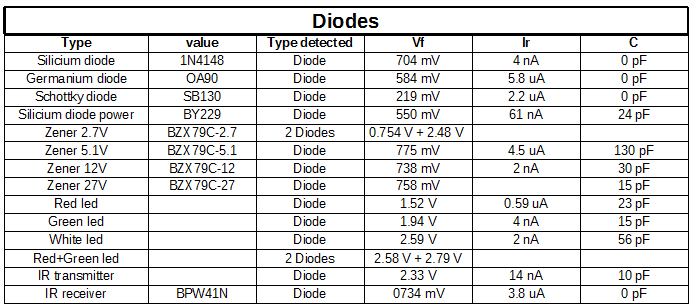

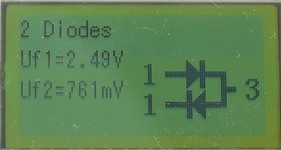
A Zener is shown as two diodes with different Vf.
Because the test voltage is limited to 5 volt, it cannot detect any zener diode above that.
SCR (Thyristors) + Triacs
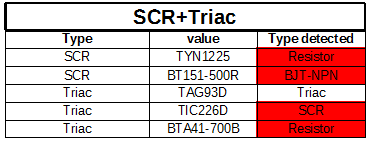
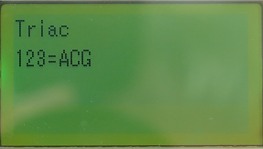
It is not very good at detecting SCR or triacs, probably because the current is to low. As can be seen the graphic is also missing.
BJT (Bipolar junction transistors)

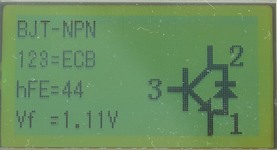
It can detect most transistors, but an old germanium power transistor failed. It does not detect the resistors in the darlington transistors.
The terminals on a triac is not names A, C and gate, but usual MT1, MT2 and Gate.
FET (Field effect transistors)
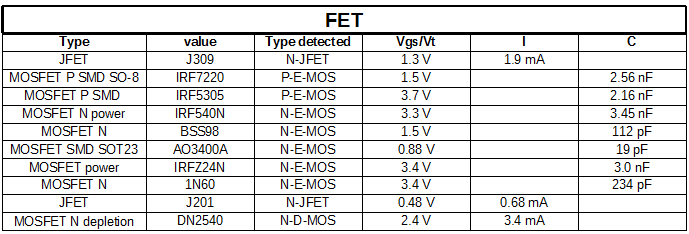

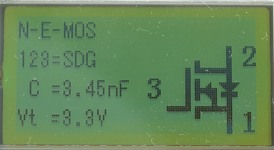
All mos transistors was detected.
IGBT (Insulated gate bipolar transistor)

It could not handle the IGBT.
Voltage regulators
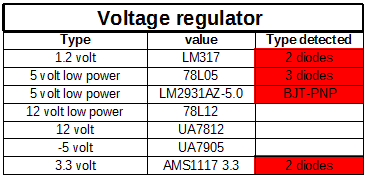
Voltage regulators are not supported.
Technical details
Components are tested with 5 volt signals.
When on the current consumption is 10mA to 25mA.
When off the current consumption is 166uA, this will drain the battery in 5 few months. Oops!
Conclusion
The tester will recognize many different components and show the values. For passive parts the precision is fairly good.
It can recognize the common semiconductors, but fails on some more special types. There is also the "problem" that any testing values shown for diodes, BJT and FETS are at unspecified conditions and the values will change with conditions.
The off current consumption is way too high, because it is a loose circuit board, I do not see it has a big problem. It is easy enough to remove the battery when finished with the testing.
For the money it is a good tester for both leaded and smd parts.
Notes
This tester is based on this design:
Original design article in German
Improved design (czech clone)
Software
About the testing of testers


























